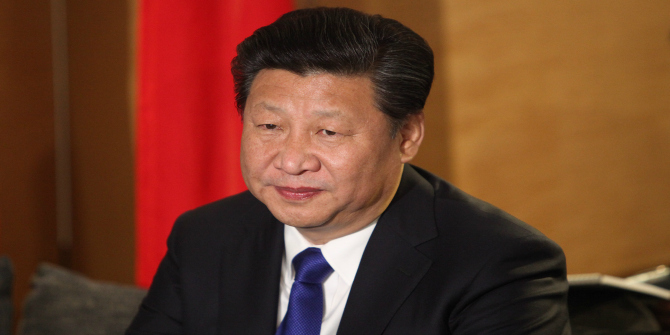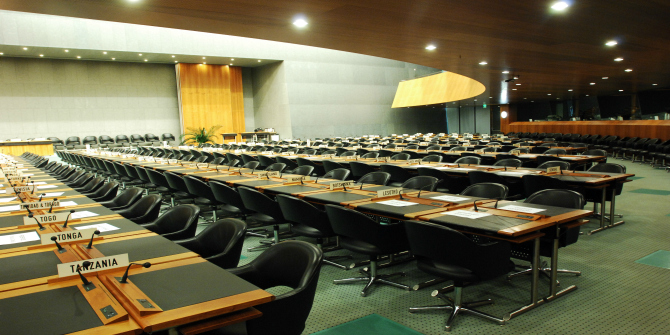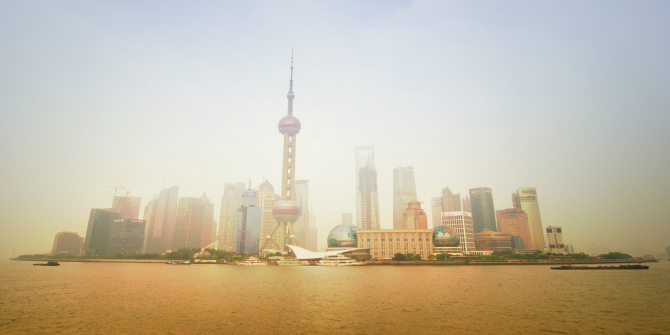In Schism: China, America and the Fracturing of the Global Trading System, Paul Blustein dives below the foam and froth of the China-US bilateral rivalry to craft a critical understanding of China and its impact on trade and the international order. The book is useful reading for those seeking to understand the ‘China Shock’ and the ensuing trade conflict between China and the US, writes Mark S. Langevin, delivering a thoughtful call for more bilateral cooperation.
Schism: China, America and the Fracturing of the Global Trading System. Paul Blustein. Centre for International Governance Innovation. 2019.
Find this book (affiliate link): ![]()
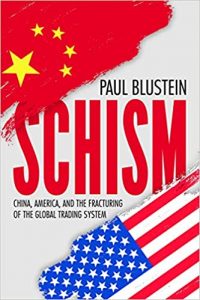 No country has benefited more from the global trading system or challenged its liberal internationalist precepts more than China. The United States and its allies embraced the challenge of incorporating a post-revolutionary China at the dawn of the 21st century. Two decades later, everyone is on the defensive as China and the US square off in successive tariff skirmishes. Paul Blustein’s Schism: China, America and the Fracturing of the Global Trading System treats the global trading system by examining China’s accession to the World Trade Organisation (WTO), bilateral negotiations with the US under the Bill Clinton administration during the late 1990s, the ‘China Shock’ (denoting the consumer and labour market impacts of China’s rapid market integration in the 1990s and its accession to the WTO) and the run-up to the US government’s trade war against China.
No country has benefited more from the global trading system or challenged its liberal internationalist precepts more than China. The United States and its allies embraced the challenge of incorporating a post-revolutionary China at the dawn of the 21st century. Two decades later, everyone is on the defensive as China and the US square off in successive tariff skirmishes. Paul Blustein’s Schism: China, America and the Fracturing of the Global Trading System treats the global trading system by examining China’s accession to the World Trade Organisation (WTO), bilateral negotiations with the US under the Bill Clinton administration during the late 1990s, the ‘China Shock’ (denoting the consumer and labour market impacts of China’s rapid market integration in the 1990s and its accession to the WTO) and the run-up to the US government’s trade war against China.
Schism dives below the foam and froth of the China-US bilateral rivalry to craft a critical understanding of China and its impact on trade and the international order. The book chronicles the gap between the way China and its one-party state manage its economy and the liberal internationalist prescriptions undergirding the WTO. Schism examines the WTO accession negotiations with the US government during the late 1990s and illustrates the personal efforts of such negotiators as United States Trade Representative Charlene Barshefsky and Chinese trade minister Wu Yi to reconcile the two-level game of multilateral trade negotiations and domestic politics. In Chapter Three, Blustein recounts how the Chinese leadership struggled to strike a deal with the Clinton administration while the US drove toward maximum concessions.
Schism makes clear that Barshefsky and her colleagues understood China’s political challenges but were charged with prying open China’s vast consumer markets on behalf of US exporters, from Midwest soy farmers to Boeing. The Clinton administration worked to embed economic liberalism in China and bind it to the liberal international order. Analysts from both countries worried about the possibility of trade liberalisation shocks, but Clinton’s missionary zeal inspired an offensive negotiating strategy that placed market concessions above social stability. Few US policymakers anticipated that such a strategy would trigger the ‘China Shock’, the deep US trade deficit with China and the restructuring of the global economy in such short order.
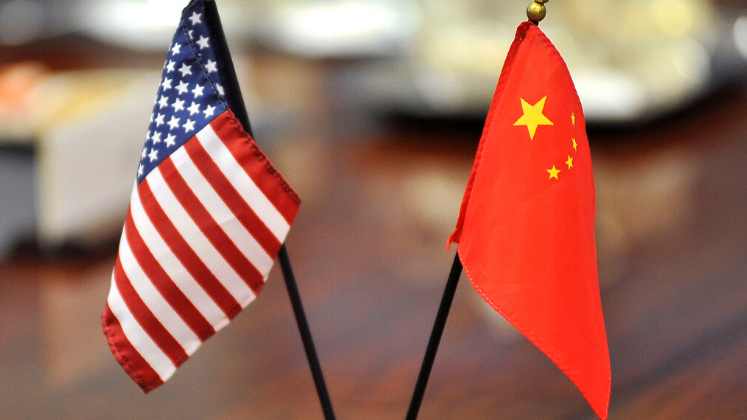
Blustein explores the shock by sharing his insights, gleaned from decades of trade reporting and framed through focused discussions of Chinese currency misalignment, the controversy surrounding state owned enterprises (SOEs) and the omnipresent issue of intellectual property theft to fully frame the schism between the Chinese national development strategy and liberal internationalist expectations. He inventories the obstacles to market contestation in China and the complex and intersecting issues of intellectual property rights and technology transfer, while noting the initial anti-inflationary impact that cheap Chinese manufactured imports delivered to the developed world.
In Chapter Four, Blustein explains these issues at both national and firm levels to show how China’s size, the speed of its economic growth and the depth of Chinese import penetration challenged national policymaking around the world as the WTO struggled to face the ‘white elephant’ in the room. His book reports the manufacturing job losses to such communities as Hickory, North Carolina, after Chinese wood furniture imports reached 60 per cent of the US market by 2005 (83). Yet, Blustein also compares these immediate impacts on US manufacturing with the deep structural and institutional changes sweeping across China’s economic landscape, leaving millions of workers dislocated and millions more on the disruptive march to the cities in the midst of stunning economic growth. He concludes: ‘hard work, investment, good infrastructure, leanness and meanness did not tell the whole story. China was giving itself a leg up in global markets that went well beyond the normal rough and tumble of international capitalism’ (90).
Schism unwraps China’s responses to the limits and opportunities presented by 21st-century global capitalism. The book highlights Chinese efforts to skirt the WTO’s core principles to accelerate national development, but reminds readers that the country’s leadership also carried out systematic efforts to comply with trade rules through the WTO’s formal dispute settlement system. China curbed intellectual property theft, lessened local content requirements (LCRs), removed key legal provisions that allowed Chinese firms to force foreign counterparts to hand over technology for market access, closed many SOEs in favour of more efficient private enterprises and has taken the focus off its currency misalignment by becoming one of the most important buyers of US Treasury bonds following the 2008 financial crisis. Unfortunately, these compliance efforts continue to defy Washington’s expectations, leading to the formation of a bipartisan consensus dedicated to the deployment of short-sighted unilateral trade measures to contain China’s growth and protect influential US private interests from cheaper Chinese imports.
Blustein narrates the story of China’s efforts to harness its market size, human and natural resources and its critical importance to global assembly lines to make the case that: ‘China’s political and economic system is not about to change in fundamental ways, nor is the US political establishment about to alter its conclusion that China is America’s most formidable strategic rival’ (8). China’s political and economic system changed the very structure of global capitalism in the 21st century to usher in what Branko Milanovic calls a clash of capitalisms wherein state-directed capitalism is pitted against the more decentralised, liberal version promoted by Washington and most recently expressed by the Obama administration’s push for the Trans-Pacific Partnership agreement (TPP). Of course, Trump’s tariff rampage does not measure up to Obama’s TPP strategy, as Blustein notes in Chapter Nine, but both reflect Washington’s imperative to contain China, while advancing US private interests with a lot at stake in the Chinese marketplace.
Schism is an X-ray of the fractured multilateral trading system. It makes the case that China’s state capitalism has eroded the WTO’s ‘credibility and authority’, while the Trump administration holds the WTO’s dispute resolution system hostage and doubles down on unilateral trade measures to throw global trade liberalisation under the bus. The book does not fully explore how US protectionist interests, from cotton to steel, derail efforts to strengthen the trading system, but it does deliver a thoughtful call for more bilateral cooperation and offers inspiration for those working to get back to the multilateral trade negotiating table.
Note: This review gives the views of the author, and not the position of the LSE Review of Books blog, or of the London School of Economics. The LSE RB blog may receive a small commission if you choose to make a purchase through the above Amazon affiliate link. This is entirely independent of the coverage of the book on LSE Review of Books.
Image Credit:120823-D-NI589-007. The American and Chinese flags stand at center table shortly before Deputy Secretary of Defense Ashton B. Carter welcomes Deputy Chief of the General Staff of the People’s Liberation Army Cai Yingting of China to a meeting at the Pentagon, August 23, 2012. (DoD Photo By Glenn Fawcett) (US Deputy Secretary of Defense Public Domain).




